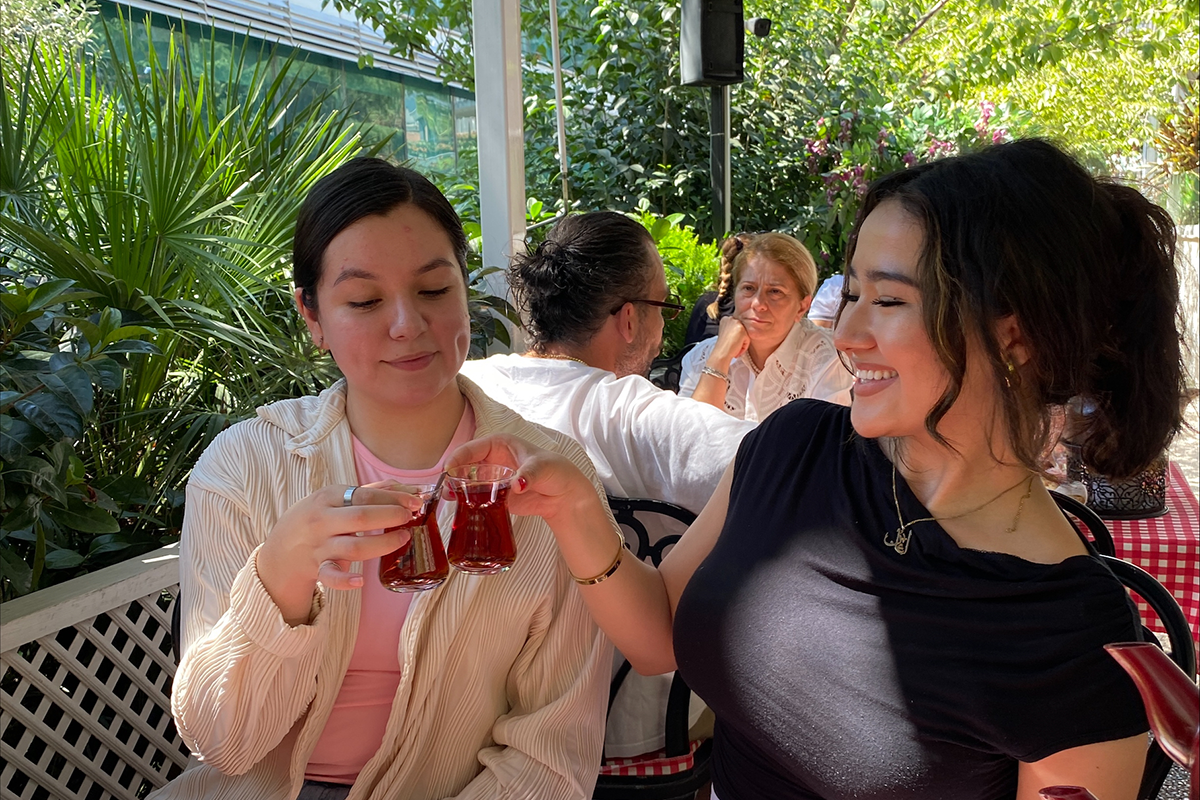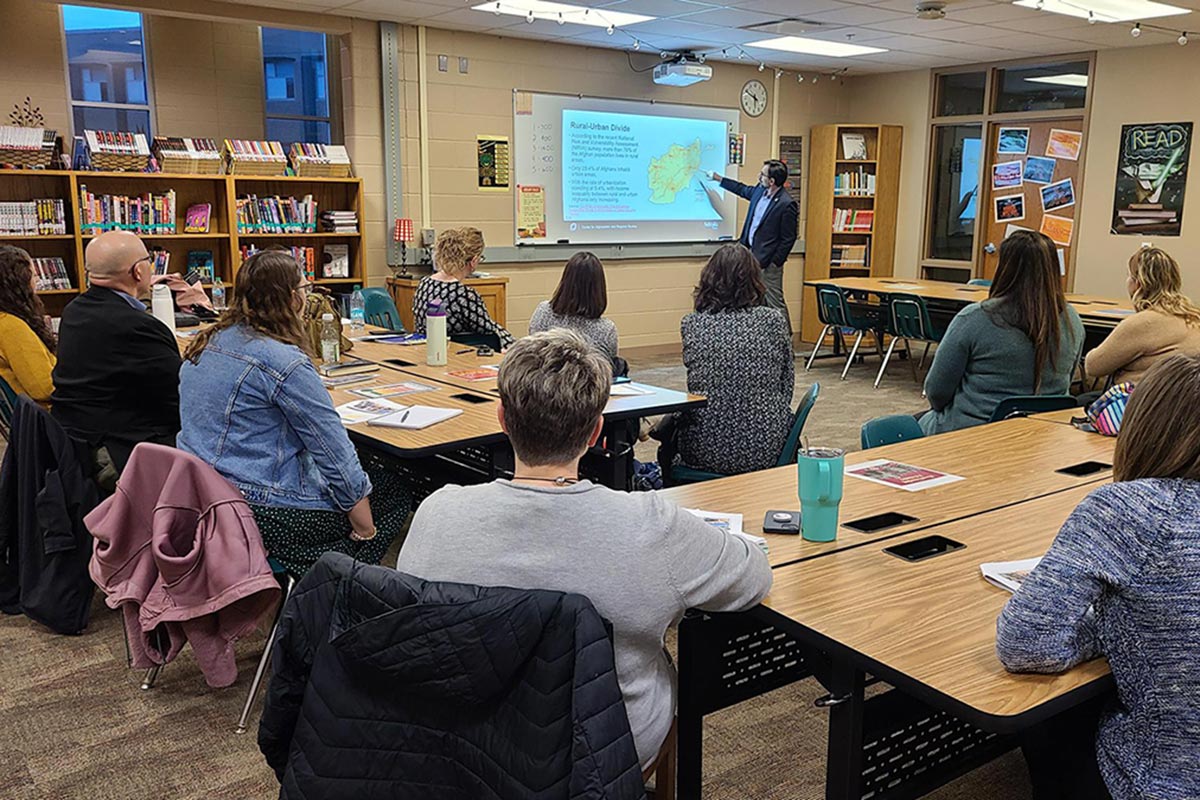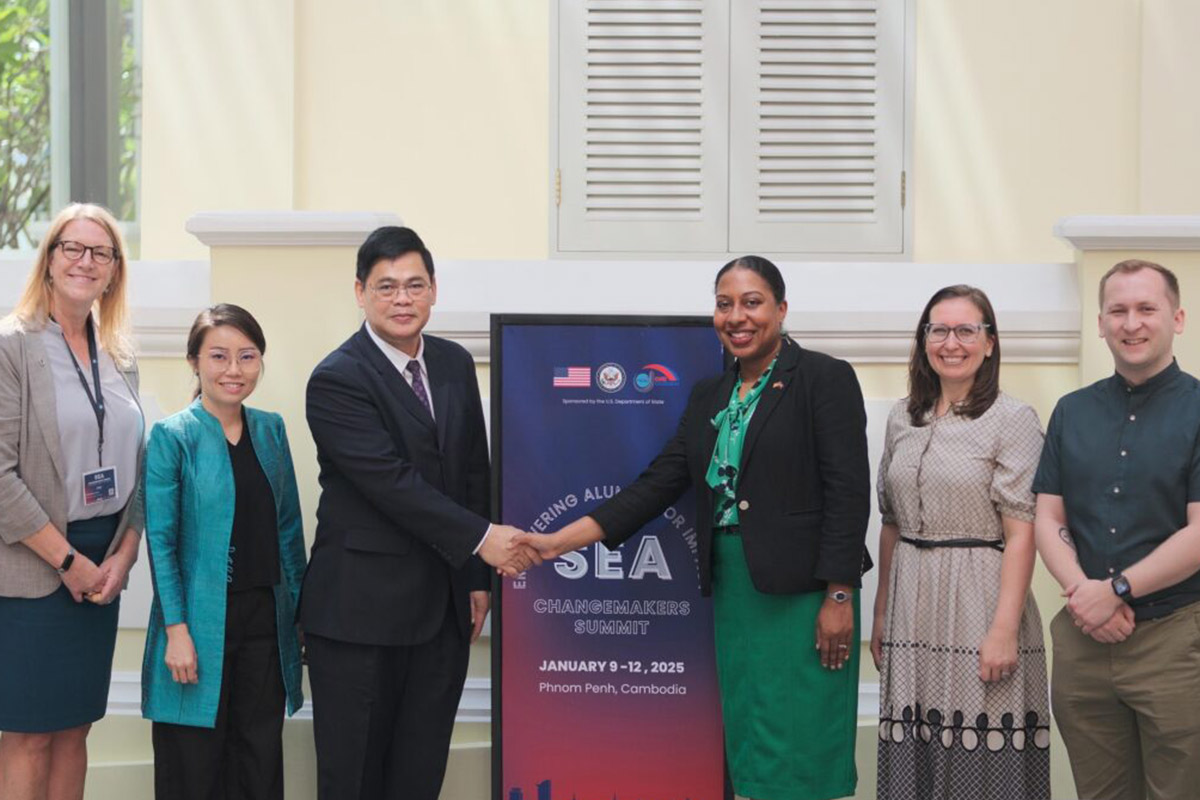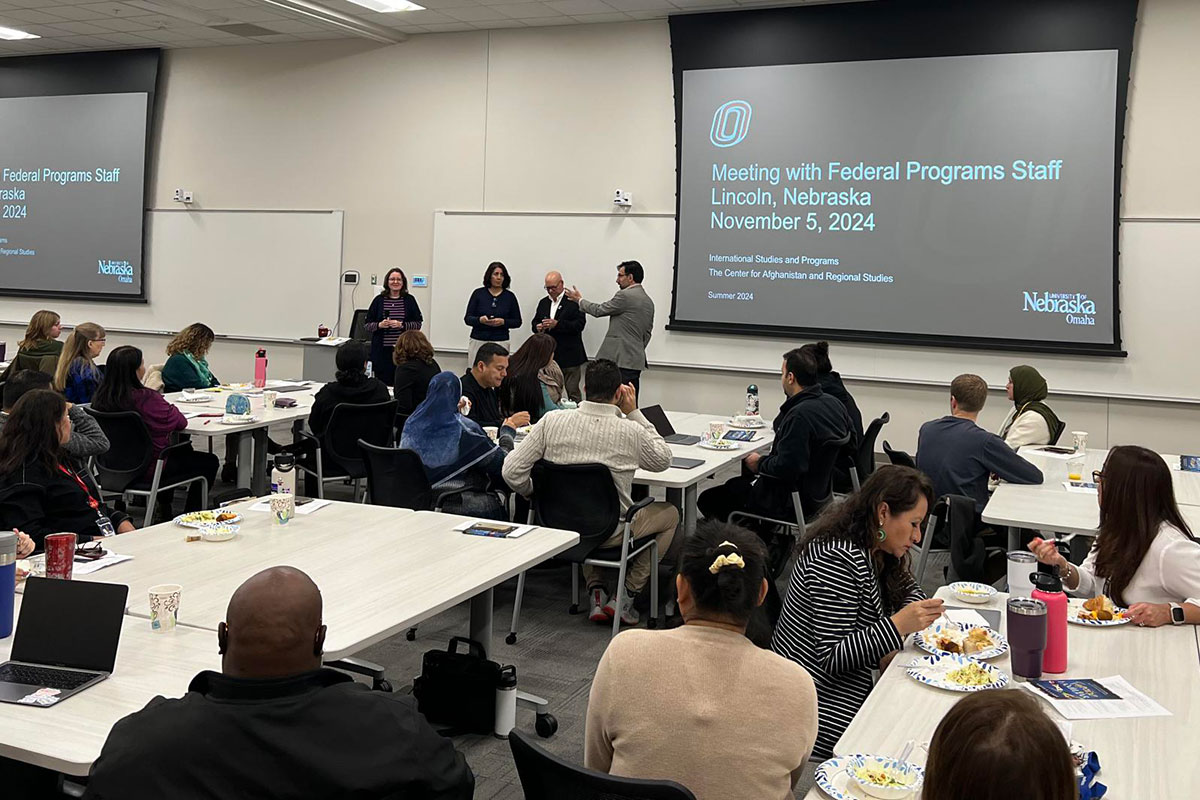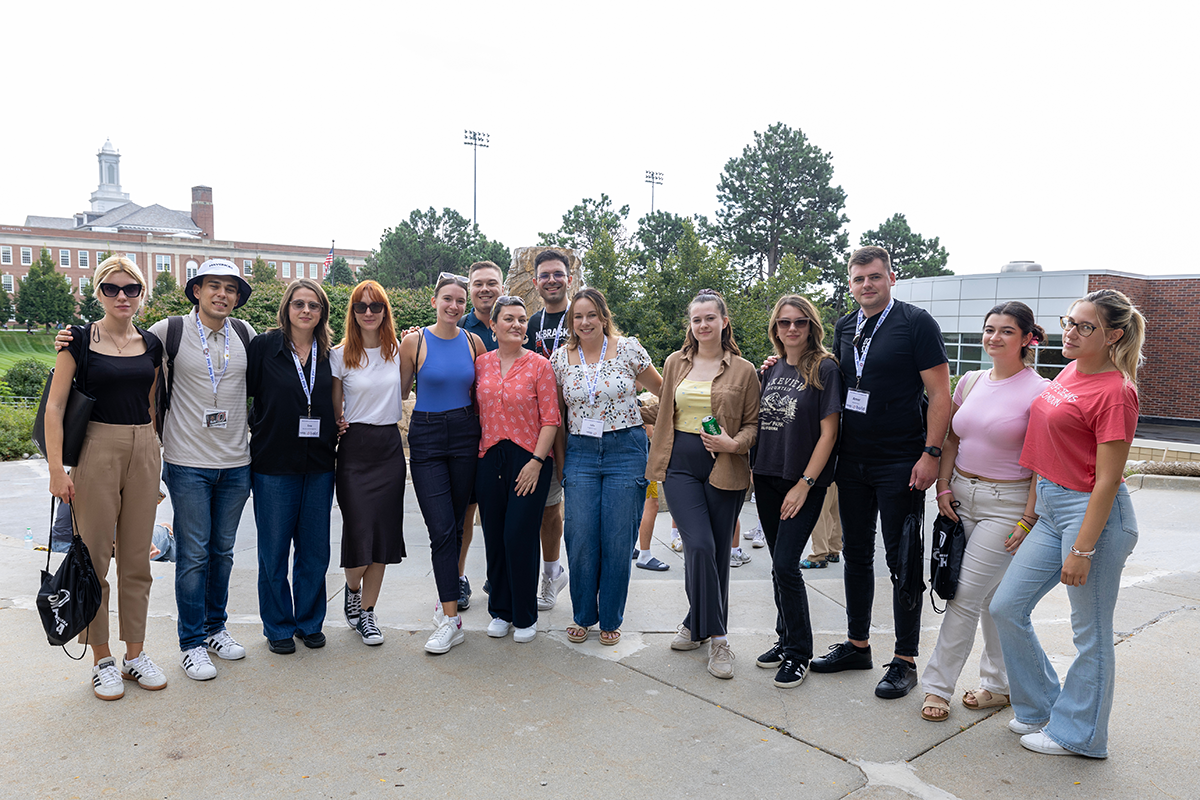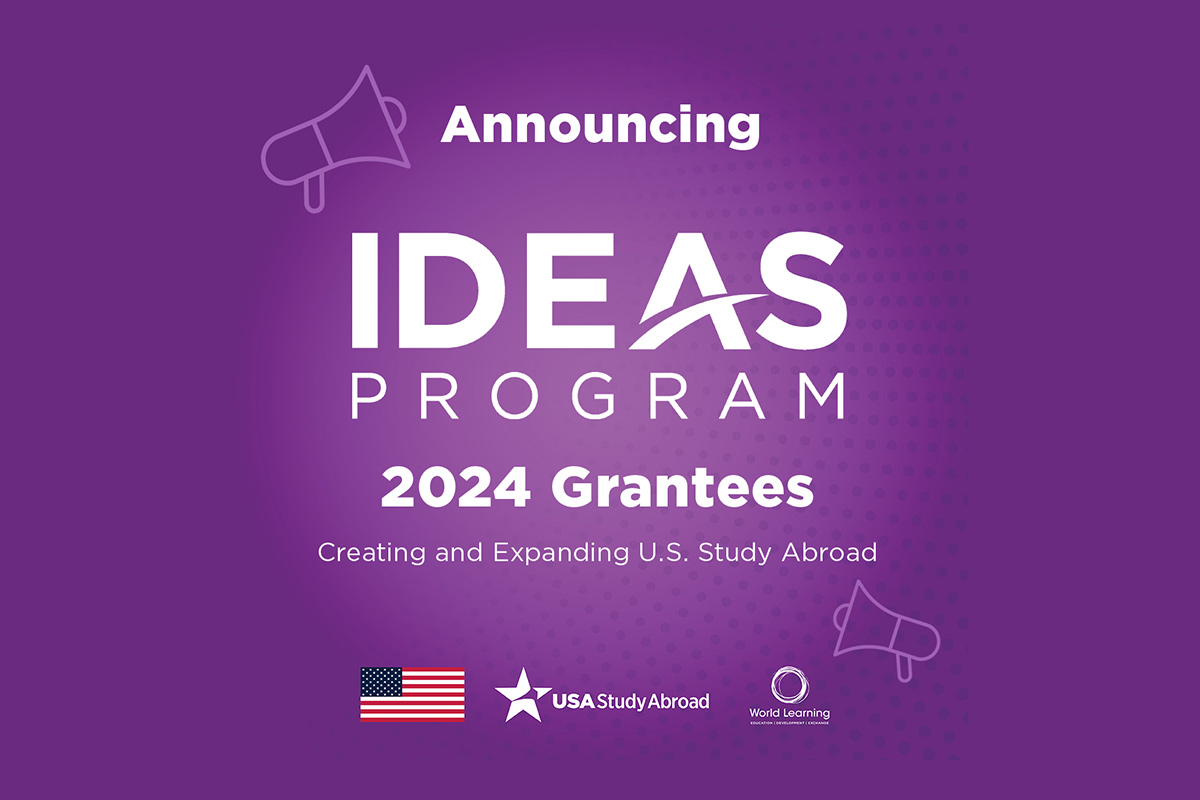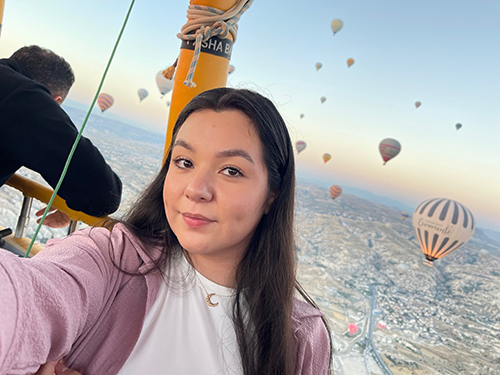
Belen Madera Rodriguez in Türkiye
Some Thoughts From Belen About Her Experience
Going to Turkey was truly an amazing experience. When I think back about the trip it all feels like a dream that went by very fast. Being able to travel abroad is genuinely a unique experience that lets you see a new part of the world. I was born and raised in Omaha which is not a big city compared to others. Arriving to Istanbul felt very eye opening since it was huge and there was large bodies of oceans all around.
The university I attended was Sabanci University and it was a lovely campus. The campus was huge and felt like it was its own town. There was so much green everywhere and the distance from the dorms to the actual buildings where classes were taken was a couple minutes away walking. I enjoyed those quiet minutes walking to class because it allowed me to soak in everything. Even while I was there it was hard to believe that I was truly living in Turkey.
During my time there I took 2 courses. The first course I took was a History Art class which was way more challenging than I thought it would be, and my second course was Organization Psychology which I loved my professor. I was nervous to take the courses as I wasn’t sure how their teaching style would be but to my surprise it was actually the same as the US. I also enjoyed meeting the students in my classes and was grateful for those who were inviting.
I turned 21 during my time in Turkey and since it was my first time not having my family around I decided to celebrate in a special way. When I first found out I was going to Turkey the first idea that crossed my mind was getting on a hot air balloon and with my birthday I thought it would be the perfect gift to myself. On the weekend of my birthday I decided to do my first official solo trip to Cappadocia which is known for hot air balloons. Being able to do this trip was truly an accomplishment. I’ve always been used to having my parents around and being very dependent on them but being able to do this solo traveling allowed me to experience being completely by myself and have to come out of my shell.
One thing I did struggle with a lot and was not able to get over was the language barrier. I had never struggled communicating with others so much which was truly humbling. It helped me see the world from a new perspective and helped me acknowledge the difficulties people like my parents went through arriving to a new country with a new language. Although it was difficult to communicate with Turkish people they were always nice and patient.
There were many challenges I came across being in Turkey but there was not one challenge I was not able to overcome. Being there truly helped me get out of my comfort zone and grow as a person. If I were presented the opportunity to travel abroad again I will take it because it opens up a new world that we’re not used to seeing. Sometimes we’re so stuck living our reality we forget there is so much more and being able to explore it is like breathing new oxygen our mind needs.
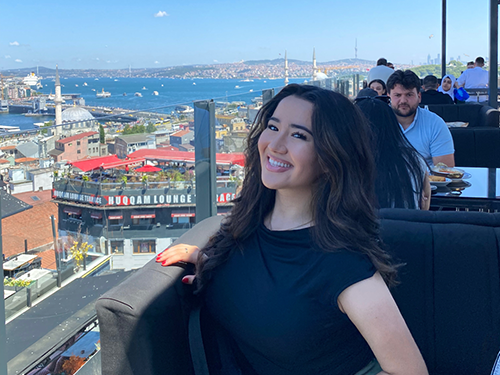
Shohina Sultonova in Türkiye
Some Thoughts From Shohina About Her Experience
Participating in the Nene Field Ambassadorship at Sabancı University in Istanbul, Turkey, was one of the most meaningful and transformative experiences of my life. Living in Istanbul felt like stepping into a completely different world, a city that blends ancient history with modern life, offering a unique charm that I’ll never forget. Before arriving, I was excited but unsure of what to expect. Coming from a Persian background, there were elements of Turkish culture that felt familiar, like the warmth of hospitality and the value placed on family, but there were also plenty of differences that pushed me out of my comfort zone and helped me grow in ways I didn’t anticipate.
My daily life was filled with adventure. I spent hours wandering through bazaars, bargaining with vendors to get the best deals on everything from scarves to spices. At first, bargaining felt uncomfortable, but I quickly got the hang of it and found it to be incredibly fun. The vendors were friendly, often laughing and joking during negotiations, and I loved the challenge of getting the cheapest rate for whatever I was buying. Exploring until I was completely exhausted became a regular part of my routine. I’d visit iconic mosques like the Blue Mosque and Süleymaniye Mosque, where I learned about their history and appreciated the beauty of their architecture. Other days, I’d watch the sunset over the Bosphorus or relax on Sabancı’s sprawling campus, enjoying the peaceful scenery.
The food in Turkey was another highlight. Turkish breakfast is an experience in itself, with an array of cheeses, olives, breads, jams, and eggs cooked in delicious ways. My favorite dish was tavuk şiş, grilled chicken skewers that were always perfectly seasoned. On campus, my friends and I would often do food runs to grab tea or coffee from Piazza Cafe, Espresso Lab, or enjoy the street food near the Bosphorus, like fresh fish wraps and roasted corn. Speaking of friendships, the people I met in Turkey made my experience truly special. Spending time with my Turkish friends helped me understand the culture on a deeper level. Whether we were at an amusement park, shopping in the city, or just hanging out on campus, they always made me feel welcome. They taught me new phrases in Turkish, introduced me to their favorite foods, and explained traditions that helped me appreciate the richness of their culture.
Taking classes at Sabancı University added another layer to my experience. I enrolled in two courses: entrepreneurship and organizational behavior. The entrepreneurship class taught me to think creatively and develop practical solutions to business problems, while the organizational behavior course helped me understand how cultural differences shape communication and teamwork. I saw this play out in group projects, where my Turkish classmates emphasized harmony and indirect communication, which was very different from the more direct, efficiency-focused approach I was used to in the U.S. Adjusting to this taught me empathy, patience, and how to collaborate more effectively in a global context.
What this ambassadorship meant to me goes far beyond academics. It taught me how to navigate a big, vibrant city, how to embrace cultural differences, and how to approach new situations with confidence and curiosity. Before living in Turkey, I had an abstract understanding of cultural diversity, but being immersed in it made those differences real and personal. I saw how much people’s values, traditions, and daily lives are shaped by their cultural context, and it gave me a deeper appreciation for diversity. At the same time, it made me reflect on my own assumptions, especially those shaped by American culture. I realized the importance of slowing down and enjoying the process, whether it was sharing a meal with friends, watching the sunset, or wandering through the city without a plan.
Turkey taught me that stepping outside your comfort zone isn’t just life-changing, it’s where the best stories begin. For students thinking about studying abroad, I can’t recommend it enough. This journey challenged me to grow in ways I never imagined and left me with unforgettable memories. By studying abroad you’ll discover new parts of yourself, build connections that cross borders, and find out how much more you’re capable of. Take the leap, you’ll come back with a story worth telling.
Interested in spending a summer or semester in Türkiye? Reach out to UNO Education Abroad, and we can help you explore your options and guide you through the process!
UNO Education Abroad Website
MavsAbroad Portal
unostudyabroad@unomaha.edu
402.554.3168

Interested in being the 2025 Nene Field Ambassador? This year's ambassador will be going to Ho Chi Minh City, Vietnam! Learn more about the program, our partner Van Lang University, and apply to be UNO's ambassador in the MavsAbroad Portal by March 16th, 2025. The Scholarship covers the program fee, international airfare, housing, and meals.
2025 Nene Field Ambassador Scholarship
